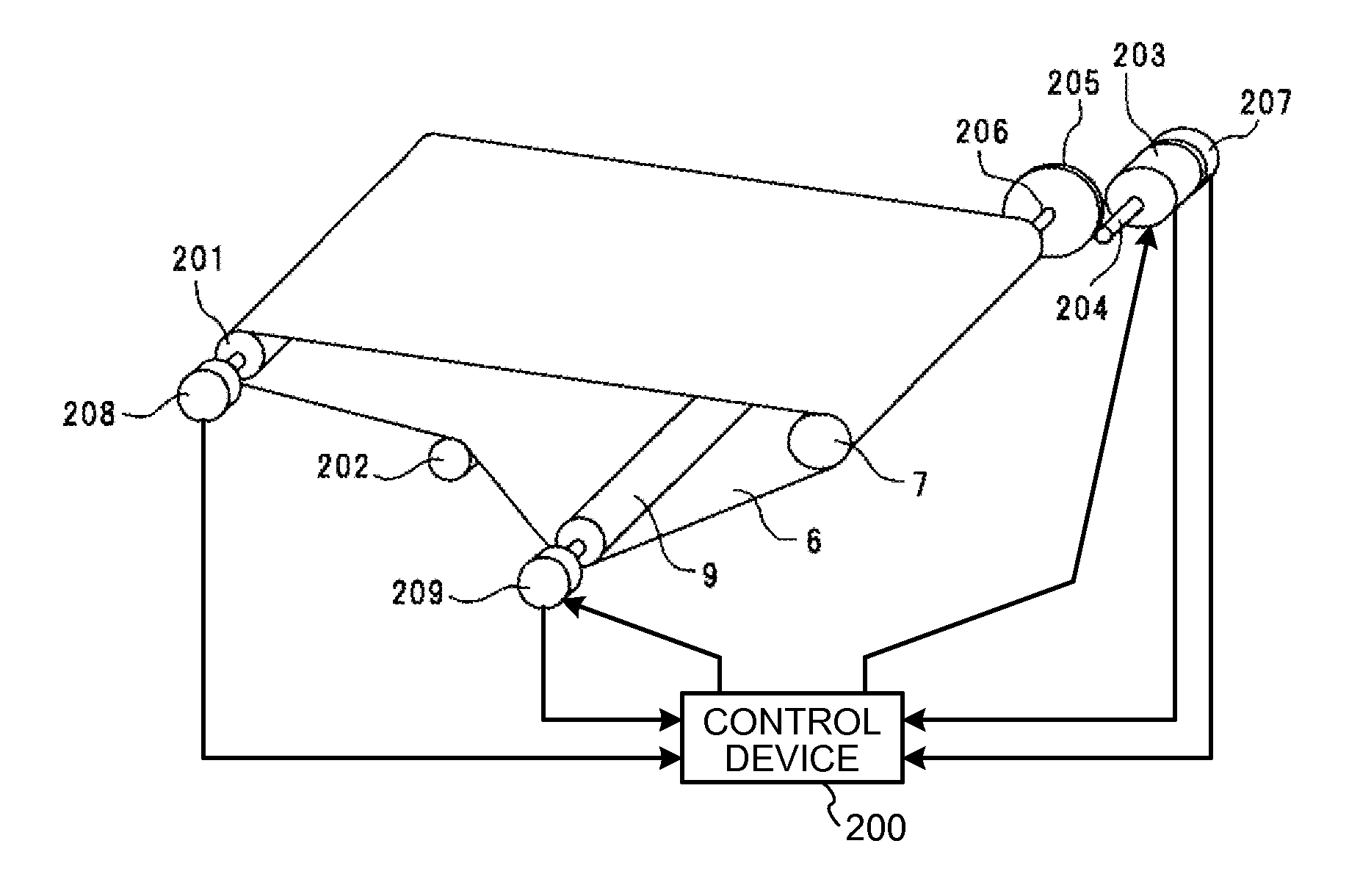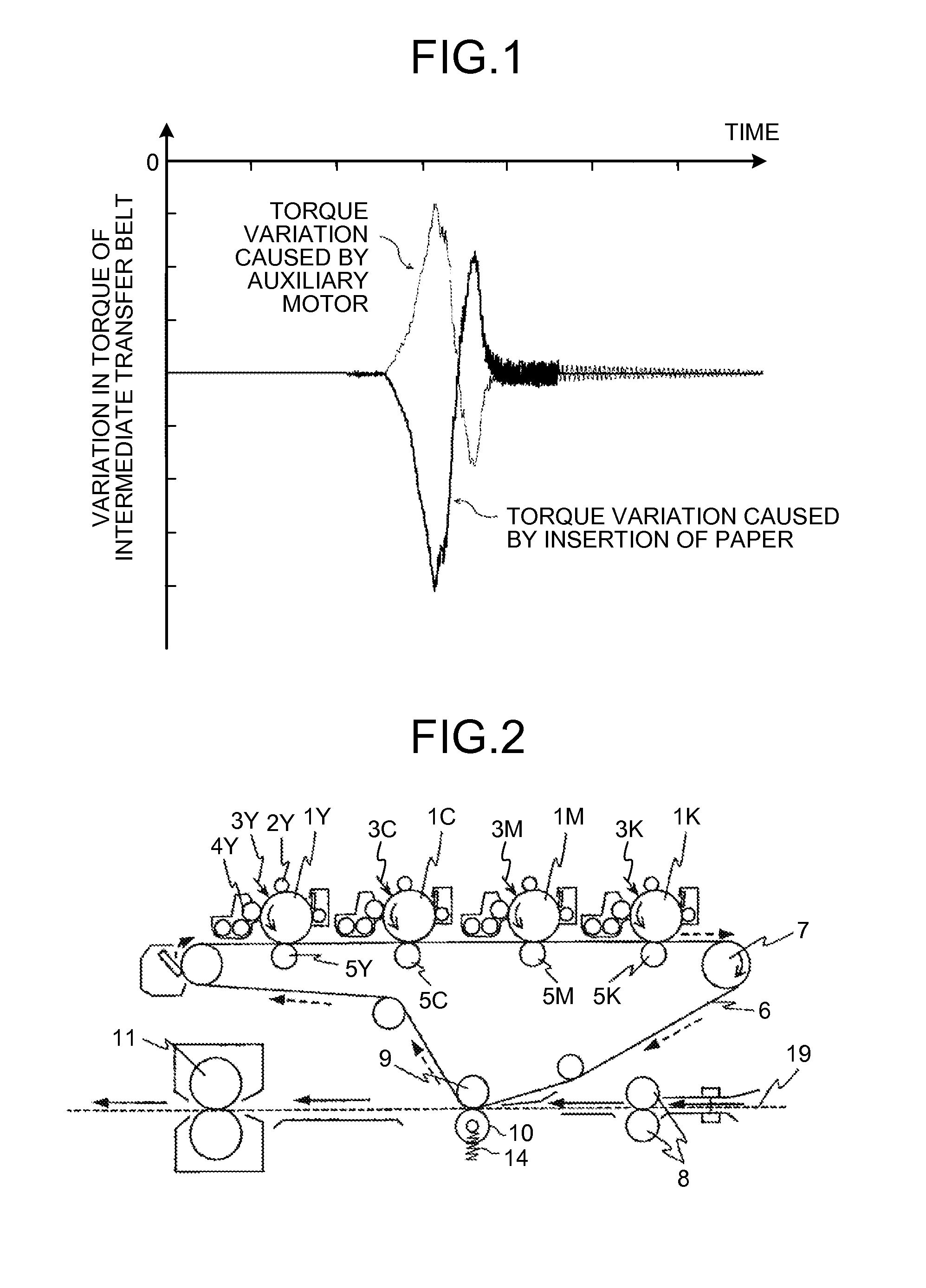Image Formation Apparatus, Driving Control Method, And Computer Program Product
a technology of image formation apparatus and driving control method, applied in electrographic process apparatus, instruments, optics, etc., can solve the problems of image degradation, large number of torque variation profiles, and considerably difficult to select the optimal profile for each image formation process
- Summary
- Abstract
- Description
- Claims
- Application Information
AI Technical Summary
Problems solved by technology
Method used
Image
Examples
first embodiment
[0038]An embodiment (hereinafter, the present embodiment is referred to as a “first embodiment”), in which the present invention is applied to a copying machine serving as an image formation apparatus, will be described below.
[0039]FIG. 2 is a schematic configuration diagram illustrating an image formation unit of the copying machine according to the first embodiment. The copying machine is a tandem type image formation apparatus that includes a photosensitive element as an image carrier for each of colors including yellow (Y), cyan (C), magenta (M), and black (K). In FIG. 2, one of Y, C, M, and K, each of which is a color-distinguishing symbol to indicate a color of a member, is added to a reference symbol that is assigned to the member with the corresponding color; however, members different in colors have a substantially identical configuration to each other. Accordingly, the color-distinguishing symbols are omitted from the reference symbols in the explanations below.
[0040]A pho...
second embodiment
[0099]Another embodiment (hereinafter, referred to as “second embodiment”) when the present invention is applied to a copying machine serving as the image formation apparatus will be described below as in the first embodiment.
[0100]The second embodiment is similar to the first embodiment with a difference from the first embodiment only in that the velocity of the intermediate transfer belt 6 is to be detected. Therefore, only the difference will be described below.
[0101]FIG. 10 is an explanatory diagram of the configuration related to driving control of the intermediate transfer belt 6 according to the second embodiment.
[0102]In the first embodiment, the angular velocity of the driven roller 201 of the intermediate transfer belt 6 is detected when the torque variation occurring on the inertial member, that appears when the intermediate transfer unit portion is regarded as an inertia system, is to be determined. However, in the second embodiment, the torque variation of the inertial ...
third embodiment
[0108]An explanation will be given below of a still another embodiment (hereinafter, referred to as “third embodiment”), in which the present invention is applied to a copying machine, corresponding to the image formation apparatus, as in the first embodiment and the second embodiment.
[0109]The third embodiment is similar to the first embodiment with a difference from the first embodiment only in that the driving force exerted by the auxiliary motor 209 is applied to the intermediate transfer belt 6. Therefore, only the difference will be described below.
[0110]FIG. 13 is an explanatory diagram of the configuration related to driving control of the intermediate transfer belt 6 according to the third embodiment.
[0111]In the first embodiment, the auxiliary motor 209 is attached via the coupling (not shown) to the rotary shaft of the secondary-transfer opposed roller 9. In contrast, in the third embodiment, the auxiliary motor 209 is attached via a coupling (not shown) to the rotary sha...
PUM
 Login to View More
Login to View More Abstract
Description
Claims
Application Information
 Login to View More
Login to View More - R&D
- Intellectual Property
- Life Sciences
- Materials
- Tech Scout
- Unparalleled Data Quality
- Higher Quality Content
- 60% Fewer Hallucinations
Browse by: Latest US Patents, China's latest patents, Technical Efficacy Thesaurus, Application Domain, Technology Topic, Popular Technical Reports.
© 2025 PatSnap. All rights reserved.Legal|Privacy policy|Modern Slavery Act Transparency Statement|Sitemap|About US| Contact US: help@patsnap.com



